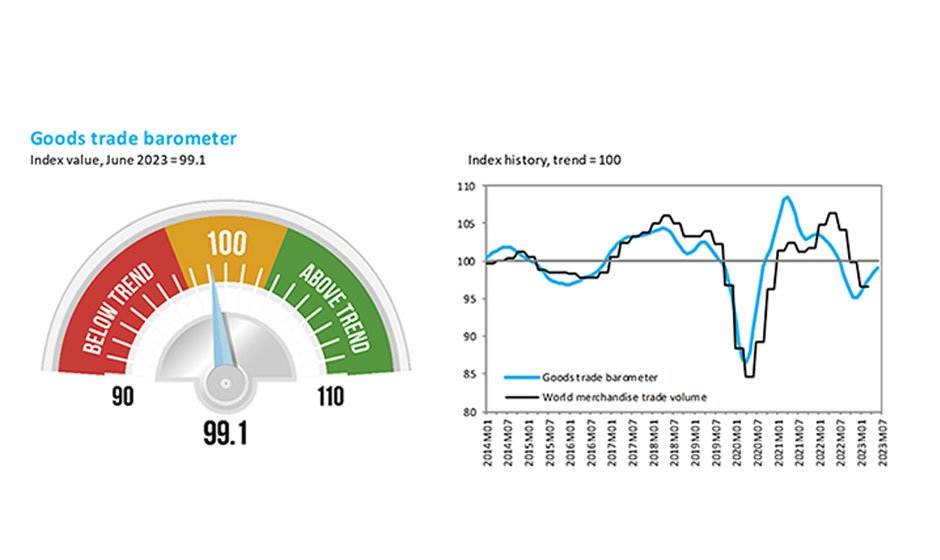The World of Trade Indices

Trading indices involve a multitude of facets that impact the financial markets. Please enjoy a comprehensive guide discussing the various aspects of trade indices.
Unlocking the World of Trade Indices: Understanding, Benefits, and Strategies
Trade indices are essential tools for assessing how well a collection of stocks or other assets has performed overall in a given market. They offer insightful information about the state of the market by expressing sentiments, trends, and the state of the economy. Gaining knowledge of the subtleties of indices can enable traders to make well-informed decisions.
What Are Trade Indices?
Trade indices, which are collections of stocks, commodities, currencies, and other financial instruments, serve as benchmarks for evaluating the performance of a particular market segment. These indices are usually computed as weighted averages, meaning that specific stocks may have a greater impact on the index’s movement than others. Please find even more information here about trade indices.
Types of Trade Indices
Several types of indices exist, each catering to different markets and sectors. Broad market indices like the S&P 500 and the Dow Jones Industrial Average represent the overall market performance, while sector-specific indices like the NASDAQ Biotechnology Index focus on a particular industry.
Significance and Benefits
Trade indices benefit traders and investors in a number of ways. They give a quick overview of the state of the market and serve as barometers of sentiment. Indices give investors exposure to a wide range of assets with a single investment, so they are frequently used by investors to diversify their portfolios.
Investment Vehicles
Exchange-traded funds (ETFs) and index funds are two of the investment vehicles that give investors access to indices. By mimicking an index’s performance, these funds give investors access to a diverse portfolio without requiring them to buy individual stocks.
Factors Influencing Trade Indices
Indexes are influenced by a wide range of factors, including corporate earnings reports, technological advancements, geopolitical events, and economic indicators like GDP growth, interest rates, and inflation. It is essential to comprehend these elements in order to predict index movements.
Strategies for Trading Indices
Traders use a variety of tactics to profit from changes in the index. While some rely on fundamental analysis, which assesses economic data and corporate performance to forecast index movements, others use technical analysis, which studies past price patterns and market trends.
Risks and Challenges
There are risks involved in trading indices. Quick swings in the index can result in significant losses for traders due to systemic risks, market volatility, geopolitical events, and unanticipated economic shifts.
Risk Management
Mitigating risks is fundamental in index trading. Diversification, setting stop-loss orders, and employing hedging strategies can help traders manage risks effectively.
The Role of Technology
Index trading has been revolutionised by technological advancements. Trading accuracy and efficiency have increased thanks to algorithmic trading, high-frequency trading, and the application of AI-powered analytics, which has sped up decision-making.
Ethical Considerations
With the rise of socially responsible investing, ethical considerations have gained prominence in index trading. Investors now seek indices that align with their values, focusing on companies with sustainable practices and ethical standards.
Globalization and Cross-Market Indices
Global indices have become more important as markets become more interconnected. These indices provide investors with exposure to global markets and diversification beyond national borders by tracking the performance of numerous markets in various nations.
Leveraged and Inverse Indices
Some indices offer leveraged or inverse exposure, amplifying the potential gains or losses based on the index’s movement. Leveraged indices aim to magnify returns, while inverse indices profit from a decline in the underlying benchmark. However, these come with increased risk due to amplified volatility.
Market Sentiment and Behavioural Finance
Index trading requires a thorough understanding of investor psychology and market sentiment. The concepts of behavioural finance aid traders in understanding the emotional biases, herd mentality, and market irrationality that can affect index movements.
Leveraged and Inverse Indices
Certain indices provide inverse or leveraged exposure, which increases or decreases possible gains or losses in response to changes in the index. While inverse indices benefit from a drop in the underlying benchmark, leveraged indices seek to increase returns. However, because of their heightened volatility, these carry a higher risk.
In Summary
Trade indices are essential resources for traders and investors because they provide information about market performance, chances for diversification, and investment opportunities. To successfully navigate the ever-changing world of index trading, one must have a thorough understanding of indices and the use of effective strategies in addition to risk management.
Trade indices are therefore complex tools that show the health of the financial markets. Success in index trading requires a deep comprehension, a calculated approach, and careful risk management, just like in any other investment venture.



